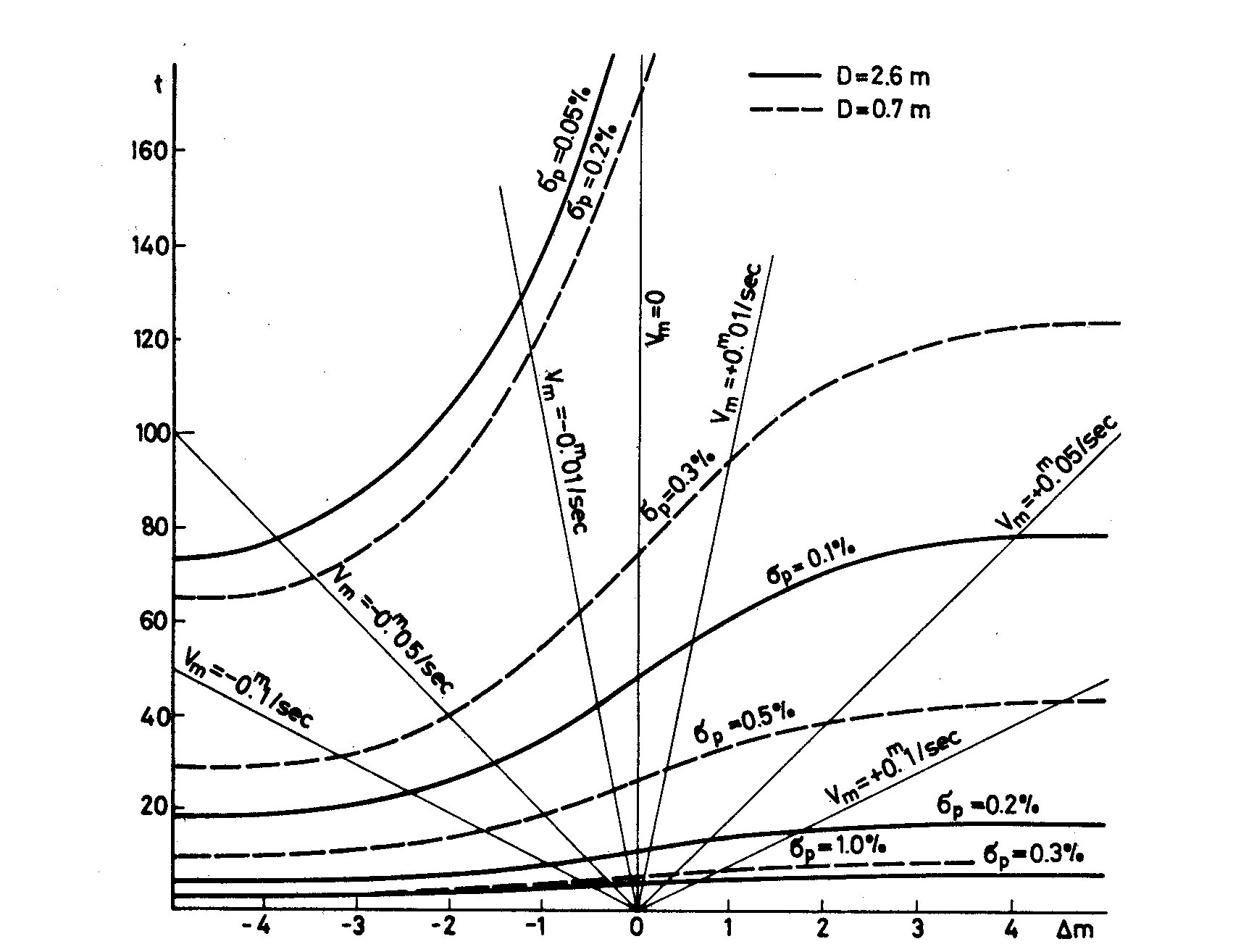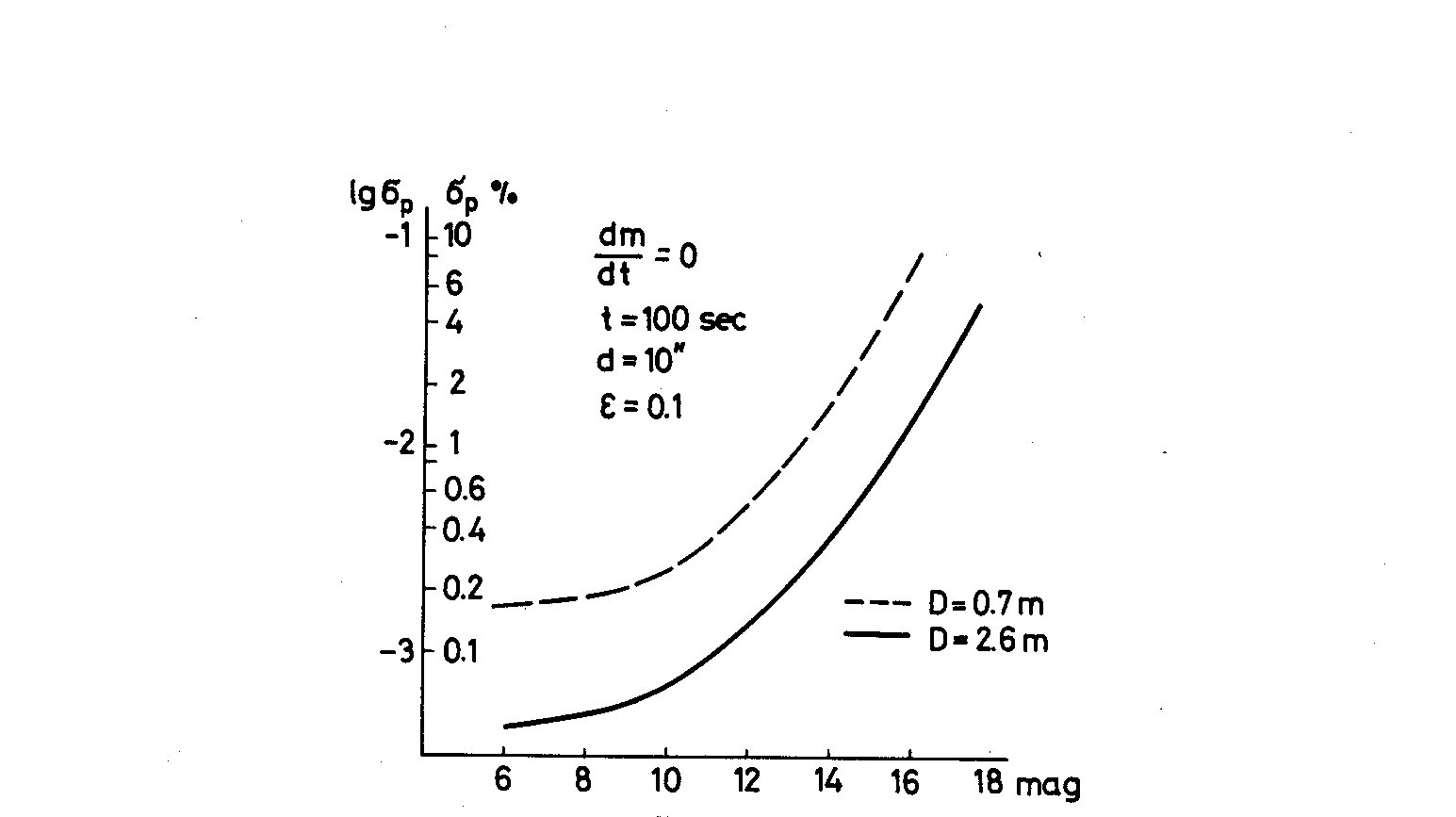Non-Periodic Phenomena in Variable Stars
IAU Colloquium, Budapest, 1968
ON THE POLARIMETRIC STUDY OF UV CETI TYPE STAR FLARES
Yu. S. EFIMOV
Crimean Astrophysical Observatory, USSR
A study of the polarization of UV Ceti stars during an outburst, especially
in its rising part, is very important for better understanding of the physical
mechanism of the outburst. These observations are connected with the measurement
of the small variable polarization of the radiation. Of course, the time
of one observation must be less than the duration of the outburst, that is, the
measurement must be taken at a rather high speed and with good accuracy.
But the reduction of time for which information on the Stokes parameters
might be obtained is limited by statistical fluctuations of the signal. These
fluctuations consist mainly of the light flux quantum fluctuations, the seeing,
and the dark current noise of the photomultiplier. On the other hand, a sufficient
number of quanta must be registered in order to guarantee an acceptable
accuracy of the measurements. Taking into account only the accidental errors
of measurements, the dependence of the accuracy of a measurement upon
the observational conditions is shown in Fig. 1. This plot refers to observations
with a one-channel integrating polarimeter containing a continually rotating
analyser. The initial stellar magnitude was chosen equal to 10m. The time of
observations is on the ordinate-axis, the amplitude of the brightness variations
on the abscissa-axis.
Tilted straight lines correspond to different rates of brightness variations
for the time of observation. The curve lines are lines of constant accuracy (for
different absolute errors sigma_p).There is a possibility to find the error of a
measurement of the degree of polarization from Fig. 1, if the amplitude of
brightness-change and its rate for the time of observation are known. So, it is
possible to measure the polarization of-the light of some UV Ceti stars using
the 2.6 meter telescope. For a well known star of this type, AD Leo (10 magn.
in its normal state) one can suppose that its brightness increases approximately
by one magnitude per 10-12 seconds (that is at a mean rate of 0.1m/sec).
As it follows from the Figure, the light polarization of this star in the rising
part of the outburst might be measured in 8-10 seconds using the 2.6 m
telescope, with an absolute error of 0.2 per cent. Making observations in the
descending part of the outburst, it is possible to get the same accuracy. Using
the 70 cm telescope, such observations would be practically useless, because
the error of the measurement will be more or equal to 0.7-1.0 per cent.
In this way, using a special method and a large telescope, it is possible
to study the changes of the polarization during the outburst in detail. A special
polarimeter for this aim has recently been built by Drs. Arsenijevic and
Kubichela (Yugoslavia). Such an equipment attached to a 100" or larger
telescope will be able to yield valuable information on the polarization during
the outburst.
 Fig. 1.
Fig. 1.
 Fig. 2.
It is interesting to consider the practically important case of observations
of stars of different brightness when one can suppose the stellar magnitude
to be constant (dm/dt = 0). The dependence of the error of the measurement upon
stellar magnitude is shown in Fig. 2 (for the 2.6 m and the 70 cm telescopes
solid and dashed lines, respectively). The duration of an observation is equal
to 100 seconds, the quantum efficiency is equal to 0.1. One can see that
the error of the measurements rises rather fast for fainter stars, and the
polarization of stars fainter than 16 magn. cannot be measured with an error
less than 1 per cent even if the 2.6 meter telescope is used.
The results obtained in this theoretical investigation are rather general.
Therefore, any polarimetric observation given with an accuracy greater than
shown here must be considered as incorrect.
Fig. 2.
It is interesting to consider the practically important case of observations
of stars of different brightness when one can suppose the stellar magnitude
to be constant (dm/dt = 0). The dependence of the error of the measurement upon
stellar magnitude is shown in Fig. 2 (for the 2.6 m and the 70 cm telescopes
solid and dashed lines, respectively). The duration of an observation is equal
to 100 seconds, the quantum efficiency is equal to 0.1. One can see that
the error of the measurements rises rather fast for fainter stars, and the
polarization of stars fainter than 16 magn. cannot be measured with an error
less than 1 per cent even if the 2.6 meter telescope is used.
The results obtained in this theoretical investigation are rather general.
Therefore, any polarimetric observation given with an accuracy greater than
shown here must be considered as incorrect.
 Fig. 1.
Fig. 1.
 Fig. 2.
It is interesting to consider the practically important case of observations
of stars of different brightness when one can suppose the stellar magnitude
to be constant (dm/dt = 0). The dependence of the error of the measurement upon
stellar magnitude is shown in Fig. 2 (for the 2.6 m and the 70 cm telescopes
solid and dashed lines, respectively). The duration of an observation is equal
to 100 seconds, the quantum efficiency is equal to 0.1. One can see that
the error of the measurements rises rather fast for fainter stars, and the
polarization of stars fainter than 16 magn. cannot be measured with an error
less than 1 per cent even if the 2.6 meter telescope is used.
The results obtained in this theoretical investigation are rather general.
Therefore, any polarimetric observation given with an accuracy greater than
shown here must be considered as incorrect.
Fig. 2.
It is interesting to consider the practically important case of observations
of stars of different brightness when one can suppose the stellar magnitude
to be constant (dm/dt = 0). The dependence of the error of the measurement upon
stellar magnitude is shown in Fig. 2 (for the 2.6 m and the 70 cm telescopes
solid and dashed lines, respectively). The duration of an observation is equal
to 100 seconds, the quantum efficiency is equal to 0.1. One can see that
the error of the measurements rises rather fast for fainter stars, and the
polarization of stars fainter than 16 magn. cannot be measured with an error
less than 1 per cent even if the 2.6 meter telescope is used.
The results obtained in this theoretical investigation are rather general.
Therefore, any polarimetric observation given with an accuracy greater than
shown here must be considered as incorrect.